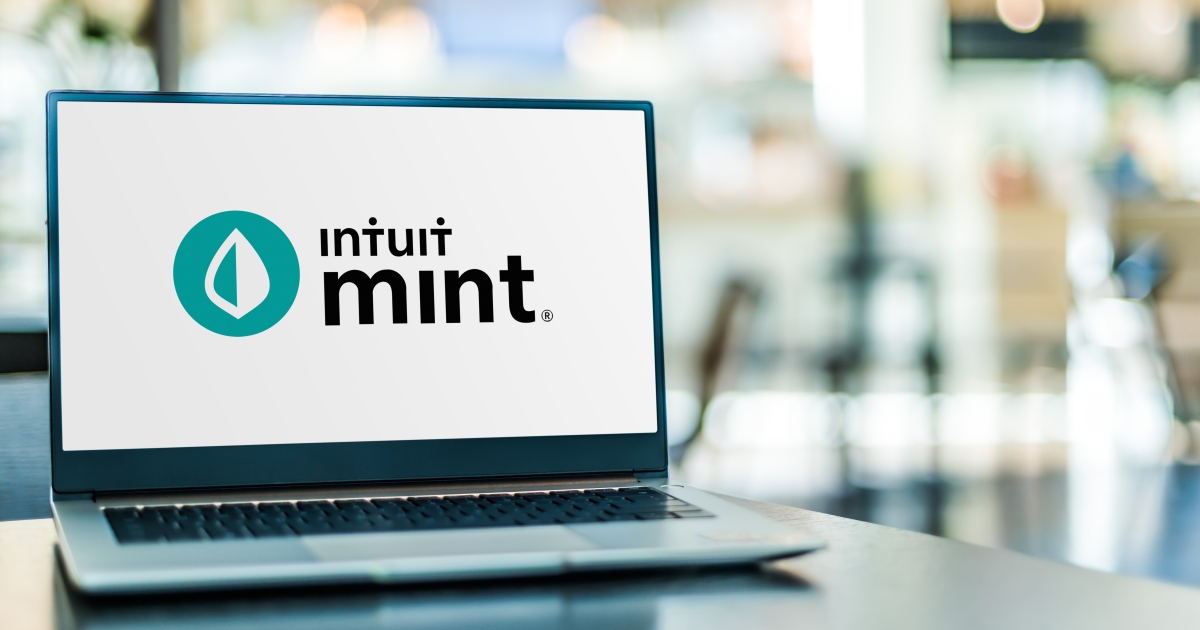Whatever your investment goals, robo-advisors can provide affordable and easy-to-use tools to help you reach them. Compared to human-managed accounts, robo-advisors often have cheaper management fees and lower or no minimum account balances.
Best of all, once you set them up, you can usually leave them alone while they do the work of maximizing your investment potential. This is ideal for military members who may lack the time or access to manage their own portfolios.
Table of ContentsWhat is a Robo-Advisor?A Word About ETFsWhy Choose a Robo Advisor?Cost SavingsEase of UseAutomated Investment RebalancingTax ImpactsA Note From the SECWhich Robo-Advisor is Best for You?WealthfrontBlooomBettermentSoFiAcorns
What is a Robo-Advisor?
Robo-advisors are automated platforms that use algorithms to guide your investment choices or manage your portfolio on your behalf.
In most cases, these services ask you to provide input on your risk tolerance and financial goals to build a personalized investment portfolio. Your answers determine how the robo-advisor will allocate, diversify and balance your portfolio.
Depending on the type of investment account and the robo-advisor, investment options can include low-cost ETFs invested in stocks, commodities, bonds and even real estate.
A Word About ETFs
Like mutual funds, exchange-traded funds (ETFs) are a type of investment that contains multiple other securities, including stocks, bonds, commodities and more. You can trade ETFs like stocks, unlike most mutual funds.
According to the U.S. Securities and Exchange Commission, investing in ETFs can lower your overall financial risk by diversifying your investments across companies and sectors.
Why Choose a Robo Advisor?
Robo-advisors are rapidly becoming the platforms of choice for hands-off, low-cost investing. Traditional financial firms like Vanguard and E-Trade are developing their own automated investment platforms alongside their traditionally-managed or actively-traded account options.
Here are some reasons why many people have shifted their investments to robo-advisors.
Cost Savings
Cerulli Associates estimates traditional investment advisors cost an average of 1% annually of assets under management (AUM). Your AUM is your account balance. At 1%, you’d pay around $1,000 in management fees for a $100,000 investment..
While 1% might not seem like a lot to pay for financial advising, assuming an average return of 4%, you could end up paying $28,000 in fees over 20 years, according to the Securities and Exchange Commission (SEC). Add an additional $12,000 if you count the money you may have missed out on by not investing those fees.
Robo-advisors usually charge less than half of this fee while providing similar results.
Whether you choose to go with a robo-advisor or a traditional advisor, pick the one that yields the highest returns with the lowest management fees. If a traditional advisor costs .075% more than a robo-advisor, your returns should be at least .075% higher to justify their higher fees.
Ease of Use
Most investors don’t want to “go it alone” when it comes to investing. Still, in-person financial advising can be hard to find if you’re stationed in another country or don’t have enough invested to make your AUM percentage worth a financial advisor’s time.
Using a robo-advisor service can be as simple as connecting to a mobile app. With just a few questions, robo-advisors can identify your investment goals and set up your portfolio’s target allocations, regardless of your current time zone or net worth.
Automated Investment Rebalancing
Over time, you need to review and adjust your investment strategies to ensure your portfolio remains well-balanced. Robo-advisors use your risk tolerance and other input to automate your rebalances. These usually occur at least annually, though some may rebalance twice a year or even quarterly.
Enabled by algorithms, robo-advisors can monitor your portfolio and rebalancing as needed to keep you on track to reach your investment goals. But, a good robo-advisor will only rebalance when the benefits outweigh the costs.
This is important because as the market changes, the percentage of each asset’s value in your portfolio changes too. Rebalancing a few times a year can help you get back to the optimal target allocation for your risk level.
Tax Impacts
Taxes can take a toll on your bottom line if you don’t handle them properly. Robo-advisors can employ tax-loss harvesting to account for factors like capital gains taxes, minimizing their impact on your returns. In turn, your tax savings can offset your robo-advisors’ management fees.
“If one stock lost you $1,000 and another made you $1,000, selling both at the same time results in a zero gain,” Jerry Zeigler, a registered tax agent, explained in a tax guide for The Military Wallet.
A Note From the SEC
Robo-advisors have only been around since 2008, so their long-term ability to generate returns has not been well-studied. The SEC recently issued a risk alert summarizing widespread issues in the robo-advisor industry, including problems with:
Compliance programs for algorithms and other proceduresPortfolio management, especially with regard to fiduciary obligations to act in their clients’ best interestsMisleading marketing and performance advertising
While SEC risk assessment sounds scary, it’s a good sign that the SEC is robustly monitoring robo-advisors to protect investors.
When searching for a robo-advisor, make sure you read any disclosures on their websites. These SEC-mandated documents will explain any potential conflicts of interest, how they arrived at their advertised rates other information consumers should consider.
Which Robo-Advisor is Best for You?
Let’s look at a few established options that might make sense for military members and government employees.
Wealthfront
Founded in 2008, Wealthfront is one of the oldest robo-advisors in the market. Wealthfront’s mission is “to help democratize access to sophisticated financial advice.” According to its site, the robo-advisor has over 470,000 clients.
Wealthfront’s app asks you about your investment goals to build your portfolio. Wealthfront assigns a “risk score” based on your answers and uses it to build a balanced portfolio of index funds.
You can set up individual or joint taxable accounts, trusts, retirement accounts (IRAs) and 529 education plans. Wealthfront-managed IRAs include traditional, Roth and SEP IRAs. It can’t connect to your TSP, but you can roll your TSP into a Wealth front IRA.
You must make a $500 minimum deposit to open an account.
Wealthfront’s management fee is 0.25% AUM for most investment accounts. For 529 accounts, you’ll pay 0.42-0.46% AUM. Wealthfront does not charge fees for other trading, withdrawals or transfers. However, individual ETFs and mutual funds may carry their own underlying fees.
For its taxable accounts, Wealthfront also employs tax-loss harvesting to minimize capital gains tax.
Wealthfront said its tax-loss harvesting offsets the management fee for 96% of its customers. The after-tax benefit can be up to 13 times these fees in some cases.
Even though Wealthfront builds your portfolio, you can exclude certain stocks from trading in your account, though Wealthfront warns this may affect your returns. You can also opt into a socially responsible portfolio based on assets “designed around sustainability, diversity and equity.”
Blooom
Blooom focuses on retirement accounts: 401ks, IRAs, and, yes, your TSP.
It’s purely a robo-advising service. While they won’t hold your brokerage account for you, they will make transactions on your behalf if you opt in to one of their paid plans.
When you link your existing accounts, it provides free, basic “insights into how you could be doing better,” according to Blooom’s website. The service’s free retirement tools include a risk tolerance assessment, strategic recommendations and some financial planning tools.
Blooom also offers three paid plans. Since they don’t directly holding your assets, you pay a flat fee for each plan instead of using a percentage of your account balance.
Each plan includes everything in the free plan and any lesser tiers.
The Personalized Portfolio Plan costs $120 annually and includes fund recommendations and investment monitoring.The Advisor Access Plan costs $165 annually and allows you to chat with financial advisors online. It also alerts you when Blooom detects withdrawals from your retirement accounts, and Blooom will place trades for you in linked accounts.The Financial Counseling Plan costs $295 annually and adds a 30-minute phone or video consultation with a financial advisor.
Blooom doesn’t offer military discounts, but they can link directly to your TSP. Depending on the plan you choose, you can enable Blooom to conduct transactions on your behalf during rebalances.
Betterment
Like Wealthfront, Betterment charges a percentage of your account balance to build and maintain an optimized portfolio for you.
The service can manage IRAs, checking, trust, taxable investment and cash reserve accounts.
A cash reserve account is like a high-interest savings account you can that isn’t subject to monthly withdrawal limits. Betterment’s cash reserve accounts are FDIC-insured and have a .10% variable APY (10 cents per $100).
Betterment can’t manage your TSP, but you can roll your TSP assets into Betterment IRA.
You can access some of Betterment’s tools for free. But if you let them handle your assets for you, it will cost 0.25% of your account balance each year.
There are no account minimums to open an automated investment account, but if you have at least $100,000 in a Betterment portfolio, you can pay .40% of your balance to opt-in to a higher plan that includes unlimited access to a human advisor.
If you don’t have $100,000 under management with Betterment, you can still speak to Betterment’s certified financial planners. Advisement sessions begin at $299 for a 45-minute session.
If your portfolio balance is over $2 million, a standard plan costs 0.15% and the higher plan costs 0.30%.
All Betterment plans feature tax-loss harvesting.
SoFi
SoFi offers a suite of financial services, including loans and loan refinancing, cryptocurrency trading and insurance. With SoFi, you can set up automatic investment and active trading portfolios for retirement and taxable accounts.
SoFi advertises no-fee robo-advising services, so how does it make money?
SoFi invests part or all of your portfolio in its own ETFs, which may not be as competitive as others on the market, according to SoFi disclosure documents.
In its disclosure statements, SoFi said its ETFs provide “broad asset allocation,” but acknowledged some conflict of interest: SoFi can profit from these allocations – possibly at the expense of investor returns.
“ETFs for which SoFi is the sponsor currently are less liquid and have a shorter track record than some alternative ETFs not sponsored by SoFi,” the company said.
SoFi doesn’t offer tax-loss harvesting for its robo-advised accounts, though it’s a commonly-accepted benefit associated with most robo-advisor accounts.
“It’s important to understand that tax loss harvesting is a way of deferring taxes, not eliminating them,” SoFi said in an article on its website. “It’s also not foolproof. There’s a risk that investors end up being on the hook for a bigger tax bill or missing out on gains in the market.”
SoFi charges $5 to open an automated account, including individual and joint taxable investment accounts, as well as traditional, Roth, SEP and rollover IRAs. It can’t manage your TSP, but you can roll your TSP investments into a SoFi IRA.
Acorns
Acorns is a robo-advisor with a twist. When you link a spending account, the service rounds transactions up to the next dollar and invests the spare change in a well-diversified portfolio.
Let’s say you pay $4.50 for a cup of coffee with one of your linked spending accounts. Acorns will transfer the remaining 50 cents into an investment account. You might not miss your spare change in the short term, but it can add up over time.
The service includes investment and retirement accounts, including traditional, Roth and SEP IRAs. The service can’t manage your TSP, but you can roll your TSP into an Acorns Later IRA.
Note:
Acorns offers a $20 sign-up bonus for military members.
If you want to invest more than your spare change, you can schedule additional balance transfers from your checking account to your Acorns investment account. The service also offers a cash-back Chrome extension that invests online rebates into your Acorns portfolio.
Acorns doesn’t have management fees, but you must pay for a subscription.
Personal plans cost $3 and include an investment account, a retirement account and a checking account. Acorns family plans cost $5 per month and includes “Acorns Early” custodial brokerage accounts. “Once your child reaches your state’s age of majority, they can use the money in their custodial brokerage account for any purpose of their choosing—without penalty,” Acorns said in an article on their website. “This means funds held in a custodial brokerage account offer more flexibility than those held in 529 accounts.”
Acorns accounts don’t offer tax-loss harvesting.
This post Best Robo-Advisors for Military Members was original published at “https://themilitarywallet.com/robo-advisors/”





